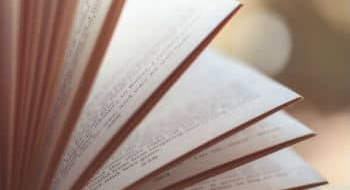4 Types of Writing Styles and How to Use Them

The voice and tone a writer chooses to tell a tale or express a concept are referred to as writing style. A knowledge of various writing styles is an attribute that many writers need. This is because only one approach to writing is not enough to convey your message to readers. You will need many styles, and you will need to master each and every one of them.
To get you started, there are around four basic writing styles that you should take note of. Each one of these writing styles is meant to have a different tone, and should be used for specific circumstances.
By learning of these writing styles, you will be able to enhance your writing technique to new heights. This article will open you to the four basic writing styles, and further strengthen your foundation as a writer.
1. Narrative writing
This type of writing style is best used for story writing. As the name implies, you are supposed to create a narrative that will draw your readers into your story. This writing style is commonly used in content where storytelling is key. Some examples of this type of content are screenplays, memoirs, short stories, long stories, novels, and novelettes.
How to use narrative writing
If you are going to use the narrative style of writing, you should make sure that you are as systematic as possible. Remember that narrative writing requires you to tell an entire story. The story should include a beginning, middle, and end. Your main goal should be to entice potential readers to read your story. You could also use literary tools such as foreshadowing and flashbacks.
When to use narrative writing
While you could use narrative writing for most types of content, it is especially useful for content such as screenplays, memoirs, short stories, long stories, novels, and novelettes. Narrative writing is perfect for these types of content because you are required to take your time and narrate the story to your readers with as much care and detail as much as possible.
Examples:
“I felt old. Again. It had been happening a lot lately. I did not live the life of an old lady, but I could hear it beckoning to me, like a mermaid on a rock.”
— Michelle Tea, Paris: A Lie
“Inching into the room, it’s clear something is wrong here. There’s a tingling sensation up my legs and back before I can even really focus on the parlor’s details. There are silhouettes of people, but I can see through them. It’s like shadows were cast and left behind to do as they please. Lost in the surreal sight of them for a moment, I inch further into the room without noticing that some were now moving behind me.
There is no warning. I’m suddenly in the air, and moving backward rapidly toward the wall. It’s almost a full second before my body registers the actual pain of the blow my stomach just took. Being hit by a car doesn't even compare to this, and I didn't even see it coming.
“For a shadow, you hit like a sledgehammer!” The words barely escape before something else slams into the base of my skull embedding most of my upper body in the wall and all but removing my head. These things are like Lucy; the disembodied dead who haven’t moved on. I've never met others that can actually touch things physically, they must be fairly potent.
I pull my face out of the hole it had been planted in, letting plaster dust fall, coating my chest and legs like snow. Looking around quickly I try to gauge my surroundings. I can’t see them, but I know they’re there. Is one easy night, without a huge dry-cleaning bill, too much to ask for these days?
I only have time to dwell on it a moment before my head is bouncing off the hardwood floor; once, twice, and then a third time in quick succession. Now ‘pick splinters out of my forehead’ can be added to my Saturday night to-do list. Damn it, this is not going as planned.”
― Dennis Sharpe, Blood & Spirits
2. Descriptive writing
This writing style is meant to be as descriptive as possible. It is usually used in autobiographies and biographies. When it comes to writing in the descriptive style, your main aim is to create a vivid and detailed reading experience for your readers. This writing style is mostly used for poems, journals, diaries, and lyrics.
How to use descriptive writing
If you are going to use descriptive writing, it is a good idea to use as many descriptive words as possible. A key aspect of descriptive writing is to touch on the five senses, which are touch, smell, sight, sound, and taste.
Utilize these senses, and use literary tools such as similes and metaphors as well. These literary tools will allow you to make your writing more vivid and engrossing.
When to use descriptive writing
This type of writing is best used for novels, poems, journals, diaries, and lyrics. Remember that you will need to make an impression with your readers, with just your words. This is where descriptive writing comes in handy. By using sensory words, metaphors, similes, and other writing devices, you will be able to make a big impact with your readers. Here are some great examples of descriptive writing.
Examples:
“Hundreds of butterflies flitted in and out of sight like short-lived punctuation marks in a stream of consciousness without beginning or end.”
― Haruki Murakami, 1Q84
“A black shadow dropped down into the circle. It was Bagheera the Black Panther, inky black all over, but with the panther markings showing up in certain lights like the pattern of watered silk. Everybody knew Bagheera, and nobody cared to cross his path, for he was as cunning as Tabaqui, as bold as the wild buffalo, and as reckless as the wounded elephant. But he had a voice as soft as wild honey dripping from a tree, and a skin softer than down.”
― Rudyard Kipling, The Jungle Books
3. Persuasive writing
This writing style is meant to persuade the reader to follow your line of thinking, or subscribe to a concept that you subscribe to. This writing style requires you to do as much research as possible, and properly use these facts to sway your readers.
How to use persuasive writing
When it comes to using the persuasive writing style, the most important thing to consider is your sources. Remember that your main intent is to persuade your readers to follow your train of thought.
This means that you should make sure that your sources are all accurate and can back up any statements that you make in your content. While you could write down your opinions on a certain topic and be based on an argument, you should still have the right facts to back up your claims.
The burden of defending your statement depends on you, so you must be prepared to do so.
When to use persuasive writing
This is usually used on speeches, reviews, recommendations, brochures, online and newspaper ads, and business proposals. This type of writing is also a favorite of lawyers when they write legal documents for their clients. Students also favor this style of writing when they write a book report or thesis.
Examples:
I am making this statement as an act of wilful defiance of military authority because I believe that the war is being deliberately prolonged by those who have the power to end it. I am a soldier, convinced that I am acting on behalf of soldiers. I believe that the war upon which I entered as a war of defence and liberation has now become a war of agression and conquest. I believe that the purposes for which I and my fellow soldiers entered upon this war should have been so clearly stated as to have made it impossible to change them and that had this been done the objects which actuated us would now be attainable by negotiation. I have seen and endured the sufferings of the troops and I can no longer be a party to prolonging these sufferings for ends which I believe to be evil and unjust. I am not protesting against the conduct of the war, but against the political errors and insincerities for which the fighting men are being sacrificed.
― Siegfried Sassoon, A Soldier’s Declaration
I am in Birmingham because injustice is here. Just as the prophets of the eighth century B.C. left their villages and carried their "thus saith the Lord" far beyond the boundaries of their home towns, and just as the Apostle Paul left his village of Tarsus and carried the gospel of Jesus Christ to the far corners of the Greco-Roman world, so am I compelled to carry the gospel of freedom beyond my own home town. Like Paul, I must constantly respond to the Macedonian call for aid. Moreover, I am cognizant of the interrelatedness of all communities and states. I cannot sit idly by in Atlanta and not be concerned about what happens in Birmingham. Injustice anywhere is a threat to justice everywhere. We are caught in an inescapable network of mutuality, tied in a single garment of destiny. Whatever affects one directly, affects all indirectly. Never again can we afford to live with the narrow, provincial "outside agitator" idea. Anyone who lives inside the United States can never be considered an outsider anywhere within its bounds…
― Martin Luther King JR, Letter From A Birmingham Jail
4. Expository writing
When it comes to informing or explaining concepts and events to your readers, expository writing is the best option. This type of writing is used in content such as how-to articles, news articles, and educational articles just to name a few.
How to use expository writing
If you are going to use expository writing, it is important that you are as detailed as possible. As it was stated earlier, this type of writing is meant to educate your readers on a certain topic.
When you use expository writing, it is important that you answer the three key questions, which are What? Why? And How?
By answering these questions, you will be able to answer a majority of your readers’ questions. Another key part of expository writing is that you will need to base your statements on logic and statistics.
While you may have your own opinions on the topic, it is still important that you base all your writing on accepted facts and sources.
If you are going to develop your writing technique, it always helps to be as multifaceted as possible. First and foremost, you should make sure that you know the basic writing styles. With this article, you will be informed on the various writing styles and how to use them efficiently.
When to use expository writing
This type of writing is used in content such as how-to articles, news articles, and educational articles, just to name a few. This is a favorite of journalists and travel bloggers because it gives them the ability to inform their readers as effectively as possible. Here are some great examples of expository writing.
Examples:
“You Can See Russia From America!
There are two small Islands in the middle of the Bering Straits that are 2.4 miles apart, and have the “International Date Line” running between them. The larger Island to the west is Russian and is named Ratmanov Island. It is considered the last island in the far eastern reach of Asia.
Little Diomede Island or Ignaluk Island, belongs to Alaska and is the easternmost of the two islands. It is as far west as you can go before reaching the “International Date Line.” Although the two islands are within easy sight of each other they are 24 hours apart, with one being in tomorrow and the other being in today. There are approximately 170, mostly Native Americans, living on the smaller American island.
During winter, an ice bridge usually spans the distance between these two islands, therefore there are times when it is possible to walk between the United States and Russia. This little stroll can be dangerous and is not advised; however at this location you can definitely see Russia from America.”
― Hank Bracker, The Exciting Story of Cuba: Understanding Cuba's Present by Knowing Its Past
“The English language [during the Elizabethan era] wasn't standardized. There were no official dictionaries. There was no cultural belief that words should always be spelled the same way. So people spelled things however they heard them or however made sense. I mean the name Shakespeare had something like 16 different spellings, and the way he spelled it isn't the way we spell it.- School of Night - pg 44”
― Bayard Louis
Conclusion
If you are going to develop your writing technique, it always helps to be as multifaceted as possible. First and foremost, you should make sure that you know the basic writing styles. With this article, you will be informed on the various writing styles and how to use them efficiently.
Become a Self-Published Author in 3 Simple Steps
Powered by Experts, Published by You. Reach 40,000+ Retailers & Libraries Around the World. Concierge Service. Tailored Packages. BBB Accredited Business. 100% Royalty Program.


